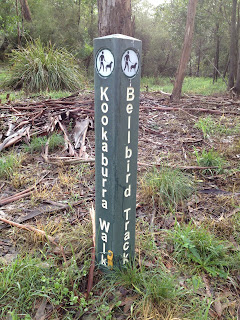No quality photos here but I am posting anyway because seeing albatross gives me a bit of a buzz!
At its highest point the Cape Woolamai headland is about .... well I'd guess 112 metres above sea level.
There is the opportunity when walking the circuit trail to get distant views of gliding seabirds and soaring raptors. When identifying birds at this distance the tendency is to rely on the "jizz" of the appearance and the behaviour as well as local knowledge of what is generally seen. Initially they all look like a hazy white speck.
On my walk last weekend (22nd June 2013) the first hazy white speck became Australasian gannet.
I got a little excited when following this next hazy white speck ....
... because when it turned and looked like this I knew we were talking albatross:
A small fishing boat gives some idea of the distances involved, firstly seen out at sea through the iphone.
Now through the camera's long lens ...
... and a heavily cropped view of the bird waiting for scraps shows that classic albatross profile.
I believe that the albatross are Shy albatross (Thallasarche cauta), one of the mollymawks. Knowing very little about pelagic birding I am quite out of my depth here. I can see that there are some taxonomy issues with Thallasarche cauta with some giving it the official common name of White-capped albatross. Other reading indicates that White-capped albatross is best reserved for the New Zealand based Thallasarche steadi. Suffice to say that there have been recent taxonomical changes and that the birds look very similar. It is all quite bewildering!
When later reviewing the day's photos I spent several minutes looking for what this "lifer" must be. I didn't remember noticing anything unusual through the view finder but became convinced that this good-sized black-headed gull-like seabird was something new!
When sanity prevailed I realised that it was the shadow cast by this Pacific gull's wing which created the striking sooty head!
 |
| Pair of Sooty oystercatcher |
Bird on!










































































